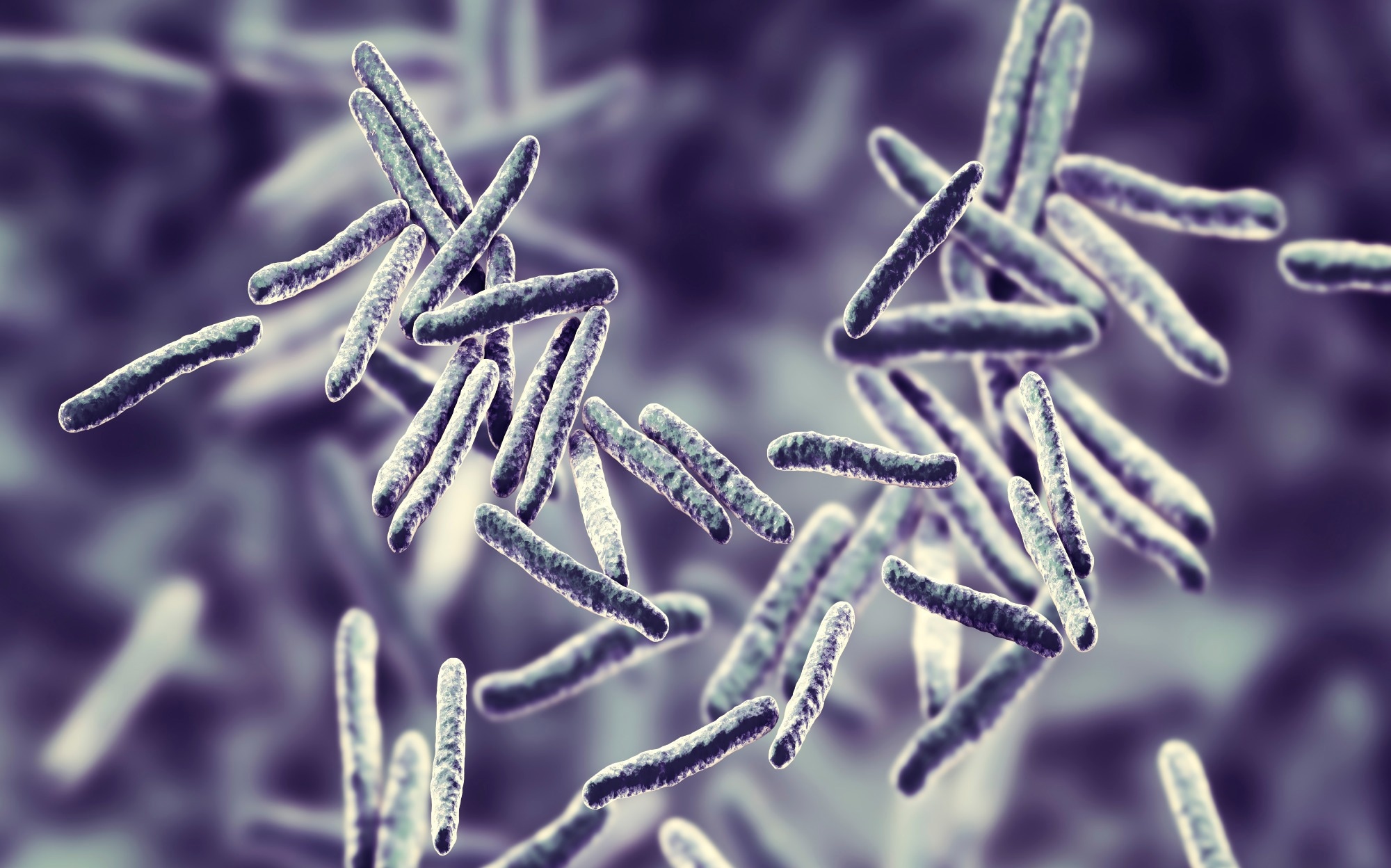Tuberculosis (TB) is a disease that primarily infects the lungs and is typically transmitted via airborne particles, which are generated and released into the air when someone infected with TB coughs, sneezes, shouts, or sings.

Image Credit: Shutterstock.com/Kateryna Kon
Today, TB is endemic in certain parts of the world, most commonly present in Africa, Asia, Eastern Europe, and Latin America. Those who have a weakened or compromised immune system, including patients with HIV/AIDS, tend to be at greater risk of contracting the disease. Each year, around 10 million people are directly affected by TB, of which around 1.5 million people die.
However, it can be difficult to diagnose a TB infection as there may be no symptoms (latent TB) for weeks, months, and in some cases, even years. Therefore, developing effective treatments when the disease is first diagnosed is critical to ensure full recovery and prevent a further spread of the disease.
Now, a team of researchers at Tufts University School of Medicine, Boston, has used artificial intelligence (AI) to determine the effectiveness of novel TB treatments.
Our framework creates accurate predictions of how effective treatments will be when we move from testing in a lab to testing in mouse models, which is an important step in choosing which treatments progress to human clinical trials.
Bree Aldridge, Associate Professor of Molecular Biology and Microbiology, Tufts University School of Medicine
Identifying Treatments
When it comes to identifying which treatments work best, practitioners are often faced with the challenge of figuring out which combination of drugs will work best for a particular patient. For instance, four first-line drugs are used to treat TB, but around 20 compounds are available, which presents around 6,000 different combinations to choose from.
With so many compounds that demonstrate effective treatment of TB, knowing which one to choose is vital to mitigate the illness, but the disease can behave differently depending on the environment and the individual; some strains may even be resistant to certain drugs and combinations.
Aldridge’s lab previously devised the DiaMOND method, or diagonal measurement of n-way drug interactions, a technique that is able to systemically study drug combination interactions to determine shorter, more effective treatment regimens for TB and other diseases that utilize drug combination therapy, such as cancer, HIV/AIDS, and malaria.
With the support of AI in the latest study, the researchers report that they are able to accelerate the speed at which effective drug combinations can be identified for the successful treatment of tuberculosis.
We now have empirical evidence of how drug combinations should be designed, rather than guessing and testing in animals for every combination.
Jonah Larkins-Ford, GBS22, Study Co-Author and a Principal Scientist at MarvelBiome
Setting the Rules for Drug Pairs
Throughout the study, the team harvested large sets of data from previous studies that contained results from a mixed combination of three drugs and drug pairs derived from twelve frequently used anti-TB compounds.
The AI was then able to determine an appropriate set of rules that drug pairs must follow in order to be considered potential effective treatments: the full details of the study have been published in the open access journal Cell Reports Medicine.
Using the rules we’ve established and tested, we can substitute one drug pair for another drug pair as long as we think it solves the same problem—i.e. we can substitute one type of crouton for another—and know with a high degree of confidence that the drug pair should work in concert with the other drug pair to kill the TB bacteria in the rodent model.
Bree Aldridge, Associate Professor of Molecular Biology and Microbiology, Tufts University School of Medicine
Combining or pairing drugs for effective treatment is key since Mycobacterium tuberculosis – the bacteria of the disease – is extremely adaptive and can evolve to show drug resistance. While new drugs and combinations have been developed, knowing which to use becomes paramount to a disease that is highly adaptable to its environment.
The team believes that this novel system of using drug pairs rather than a combination of three-four different drugs could speed up and reduce the costs of determining effective TB treatment. This has been considered crucial since the onset of the COVID-19 pandemic, as TB deaths have risen for the first time in over a decade.
References and Further Reading
Larkins-Ford, J., Degefu, Y., Van, N., Sokolov, A. and Aldridge, B., (2022) Design principles to assemble drug combinations for effective tuberculosis therapy using interpretable pairwise drug response measurements. Cell Reports Medicine, [online] p.100737. Available at: https://www.cell.com/cell-reports-medicine/fulltext/S2666-3791(22)00286-5?_returnURL=https%3A%2F%2Flinkinghub.elsevier.com%2Fretrieve%2Fpii%2FS2666379122002865%3Fshowall%3Dtrue#secsectitle0080
Rafferty, J., (2022) Tufts Scientists Use Artificial Intelligence to Improve Tuberculosis Treatments. [online] Tufts Now. Available at: https://now.tufts.edu/2022/09/14/tufts-scientists-use-artificial-intelligence-improve-tuberculosis-treatments
Disclaimer: The views expressed here are those of the author expressed in their private capacity and do not necessarily represent the views of AZoM.com Limited T/A AZoNetwork the owner and operator of this website. This disclaimer forms part of the Terms and conditions of use of this website.